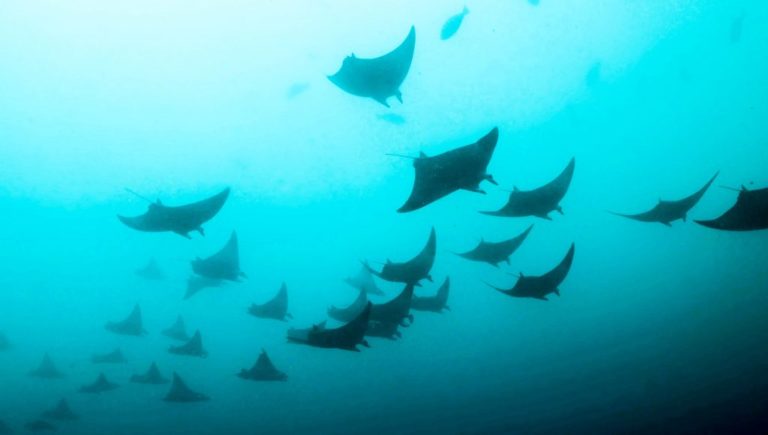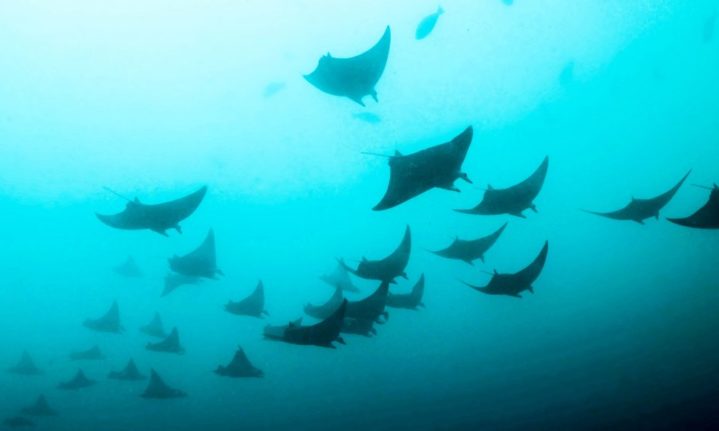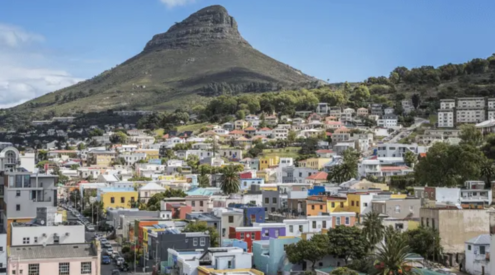While researching the endangered shortfin devil rays at Aliwal Shoal off the KwaZulu-Natal South Coast in 2020, Michelle Carpenter discovered that this Marine Protected Area (MPA) includes an area of cleaning stations used by shortfin devil rays – only one of two known places in the world.
And this December, visitors to the KZN South Coast will get the chance to dive with these unique creatures with the Devil Ray Conservation Dive launch.

Picture: Michelle Carpenter
‘South Coast Tourism and Investment Enterprise (SCTIE) is excited to welcome the launch of this conservation initiative that will bring our tourists closer to the incredible marine life found here,’ said Phelisa Mangcu, CEO of SCTIE.
‘With Aliwal Shoal and Protea Banks already two of the world’s top dive sites, it’s wonderful that we’re now able to further enhance our offerings for international divers. This launch comes on the back of The Conservation Symposium, which was successfully hosted on the KZN South Coast, attracting leaders in the field of various conservation sectors. The preservation and protection of our wildlife and natural areas is a priority, and we’ll continue to support such impactful initiatives.’
Carpenter, a local diver and PhD student (University of Cape Town) specializing in manta and devil rays, said that the Devil Ray Conservation Dive is a unique dive visiting the shortfin devil ray cleaning stations discovered on Aliwal Shoal.
‘The Endangered shortfin devil ray is closely related to manta rays, is completely harmless to divers, and is generally rare to see,” explained Carpenter. “Manta rays are famous around the world for their cleaning stations, but most devil ray cleaning stations have not yet been found.’
She explained that cleaning stations are areas on the reef where cleaner fish remove parasites or dead tissue off of a ‘client’ such as rays, sharks, fish and turtles. The cleaner fish gets a meal, while the client maintains health.
‘These cleaning stations are areas where sharks and rays repeatedly return to, making them hotspots critical to protect for their conservation,” she continued. “One of the already famous cleaning stations on Aliwal Shoal would be ‘Cathedral’, where spotted ragged tooth sharks, potato bass, and other creatures visit to be cleaned.’
Presently, Aliwal Shoal is one of only two known shortfin devil ray cleaning station areas – the other being Bazaruto Archipelago in Mozambique. Carpenter said, before her discovery, the cleaning station had likely gone unnoticed. Manta rays have been documented visiting the same cleaning station for over 30 years. While this shortfin devil ray cleaning station has only been monitored since 2020, the rays have been found to return every year.

Picture: Michelle Carpenter
‘We have incredible ray diversity and abundance at Aliwal Shoal. Though a world-famous shark destination, Aliwal Shoal has even more diversity in terms of ray species than it does sharks,’ she commented.
Fast facts about shortfin devil rays
- Shortfin devil rays, like all ‘mobulids’ are filter-feeding rays that eat zooplankton, like whale sharks. So little is known about this family of rays that their taxonomy is still being questioned.
- Mobulid ray species are slow growing, with live birth, long pregnancies (10 or more months) and small numbers of pups, making them easily impacted. Like all sharks and rays, any fishing of these animals is not sustainable.
- The main threats to mobulids include direct harvesting of their gill plates for Asian markets and bycatch from longlines, tuna seine nets, gill nets, and trawling.
- Other impacts are from climate change which affects water currents, temperature, and food availability.
- Pollution also affects ocean life and is currently a specific issue on the KZN coast; microplastics, industrial effluent, runoff from agricultural farms, sewage, noise pollution, and more.
Devil Ray Conservation Dives
Carpenter has commonly seen fevers (groups) of 10 to 20 devil rays, extending up to 200 in a group at a time However, these rays can be very shy and it is essential that the divers don’t impact these sites. With the support of the Rufford Foundation, Carpenter has given local talks within the community and surveyed stakeholders to develop a devil ray dive. This includes a Code of Conduct taught and led by local dive masters.
The dive masters trained to lead Devil Ray Conservation Dives will brief divers on the basic biology and conservation of shortfin devil rays. Divers will also receive a complimentary Mobula ray hand-knitted plushie, contributing to a local school having more marine biology-based activities. A small donation will also be made to the Clansthal Conservancy which has a monitoring programme of Aliwal Shoal, as well as contributing to acoustic telemetry research of devil rays to determine their movements in and outside MPA.
This upcoming December 2022-February 2023 season, The Devil Ray Conservation Dive is offered by ScubaXcursion Dive Centre and ScubaCo Diving & Travel at a cost of R200 more than the dive centre’s Reef Dive Price.
Any additional local dive centres interested in offering the Devil Ray Conservation Dive can contact Carpenter at [email protected] to set up the Devil Ray Conservation Dive for the following season (December 2023-February 2024).
Follow us on social media for more travel news, inspiration, and guides. You can also tag us to be featured.
TikTok | Instagram | Facebook | Twitter
ALSO READ: 88 countries agree on shark fin regulation in historic vote



















